Climate and nutrition smart villages as platforms to address food insecurity in Myanmar
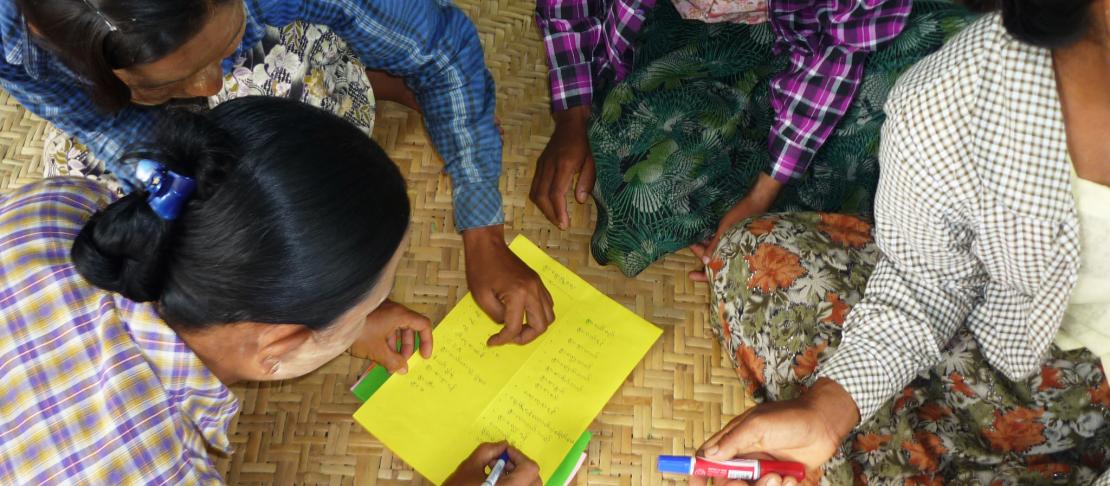
Summary
The Climate and Nutrition Smart Villages project was implemented in four villages representing four major agro-ecological regions in Myanmar with the objective to identify and out-scale climate-smart agricultural practices and interventions by using community-based adaptation strategies.
Rich in natural resources, Myanmar is characterized as being an agricultural country, with 36% of its economic output resulting from this key sector. However, it is estimated that as much as 25% of the country’s population lives below the official poverty line and faces major problems regarding food security and nutrition. Around 68% of household expenditures are spent on food. Moreover, the increased incidence of climate change-related impacts has been further exacerbating such issues and affecting livelihoods, with changes in the occurrence of droughts, floods, and cyclones across the nation.
Given that the effects of climate changeeffects differ significantly from one agro-ecosystem to another, the scaling-out of Climate-Smart Agriculture (CSA) technologies and practices while using Community-Based Adaptation (CBA) strategies, has been regarded as a potential solution to food security and nutrition challenges. This type of measure, which was first tested in the Philippines by the International Institute of Rural Reconstruction (IIRR) with support from the CGIAR Research Program on Climate Change, Agriculture and Food Security in Southeast Asia (CCAFS SEA), not only allows accounting for such differences but also permits the implementation of targeted and location-specific solutions. Therefore, by making use of the valuable lessons learned in the Philippines, the IIRR in partnership with CCAFS SEA, and with funding from the International Development Research Centre (IDRC), introduced the Climate-Smart Village concept in Myanmar.
The project was launched in April 2018 in four selected areas, each of them representing a different agro-ecological system, of which two are mountainous: HtiPhu Village in Mandalay Region (dryland, sandy, semi-arid land), MakyaukAia Village in Chin State (highland), KyautNgat Village in Shan State (upland), and Ma Sein Village in Ayeyarwaddy Region (lowland delta). Actions operate at the community level and its surrounding landscape, with the use of participatory approaches and social learning methods. Lessons extracted are then expected to be used for scaling up the solution to at least five other villages within the same township.
The main research objectives of the project include:
- To fine-tune, refine, adapt and optimize the Climate-Smart villages approach as a platform to support Community-Based Adaptation (CBA) processes in four different agro-ecological and diverse socio-cultural settings within Myanmar.
- To develop and test scalable social learning processes and institutional mechanisms that facilitate or drive CBA processes resulting in multiple/co-benefits for the farm household.
- To scale up the most successful social, technological, and methodological (climate-smart, gender-equitable, and nutrition-sensitive) agricultural innovations through sub-national governments/institutions, civil society organizations, and research and teaching institutions.
Overview
- Location:
- Implementation sites:
-
- Multiple countries
- Multiple locations
- Mountain region:
-
Chin Hills
- Province:
-
- Ayeyarwaddy region, Mandalay Region, Shan State, and Chin State
- Site locations:
-
Ma Sein village in Bogale, Htee Pu village in Nyaung-Oo, Kyaung Taung village in Nyaung Shwe, and Sakthal village in Hakha
- Solution scale:
- Ecosystem type(s):
- Solution type(s):
- Sector(s):
- Climate impact(s) addressed:
- Other climate impact(s) addressed:
-
- land degradation
- Climate impact time-scale(s):
- Main benefit associated with the solution:
- Co-benefit(s) associated with the solution implementation:
- Implementation timeline:
-
- 2018 - 2021
Solution details
Main beneficiaries & outcomes
The main beneficiaries of the solution include smallholder-farmer households from the four participating villages. They are envisioned to benefit from larger farm productivity, more stable incomes, increased adaptive capacities and resilience, and reduced climate-related risks. Likewise, other community inhabitants, which are characterized by their high poverty levels and include minority groups, will also see their livelihoods and food security enhanced through reduced inequality and poverty, increased job opportunities, and better nutrition. Moreover, thanks to the social learning methods and participatory approach, the solution also permits the generation of knowledge and awareness-raising among the population. Benefits were wide-reaching, and special attention was given to the gender dimension of solutions, looking to reduce gender inequalities and strengthen the participation of women in the different project activities and decisions.
Due to the building of knowledge and provision of lessons, other outcomes include strengthened government policies, programs, and investments supporting climate-resilient agriculture, as well as an increased adoption and mainstreaming of Community-Based Adaptation (CBA) within development programs of civil society.
Planning and implementation
The International Institute of Rural Reconstruction (IIRR) is the main organization in charge of implementing the project, working in collaboration with the Climate Change, Agriculture, and Food Security (CCAFS) and other strategic partners.
Intending to replicate the Climate-Smart Village concept tested in the Philippines, and before the implementation process of the project, the IIRR conducted scoping studies in 2016 covering four different cultural and ecological locations. By using participatory approaches such as interviews and focus-group discussions, the study gathered baseline data by assessing the technological, social, and institutional aspects of the areas. These studies helped in understanding vulnerabilities and drivers of nutrition and food security, and establishing the four participating villages for the project. Later, Climate-Smart Agriculture (CSA) prioritization activities were also organized to collectively identify the existing and potential CSA practices that better addressed the specific needs of each location.
Examples of key interventions within Climate-Smart Villages include:
- Weather smart: seasonal weather forecast, ICT-based agro-advisories, climate analogs.
- Water smart: aquifer recharge, rainwater harvesting, community management of water, on-farm water management.
- Carbon smart: agroforestry, alternate wetting, and drying, conservation tillage, land use systems, livestock management.
- Nutrient and pest smart: site-specific nutrient management, precision fertilizers, catch cropping/legumes, ecological engineering.
- Energy smart: biofuels, fuel-efficient engines, residue management/biochar, minimum tillage.
The testing of technological options and methodological innovations serves to establish evidence, social learning, and knowledge generation and management in the four villages and surrounding areas.
Finance
Funding for this solution was provided in the form of a grant by the International Development Research Centre (IDRC), Ottawa, Canada.
Total funding ascended to CA$ 713,500.00 or approximately USD 569,019.
Innovation
The Climate-Smart Village approach is considered an innovative and unique solution tackling climate-related issues in Myanmar, not only for the participating villages located in the mountain uplands and upland plateau but also for the other two situated in the dry and delta zones. This is because, in addition to agricultural farms, the project equally includes homesteads, schools, and community forests surrounding the implementation villages. Furthermore, the project also stands out for the inclusion and execution of some of the most promising social, technological and methodological innovations as adaptation solutions.
Performance evaluation
Monitoring and performance evaluations are carried out by researchers and local farmers. These continuously assess the benefits from the Climate-Smart Villages action research by using some previously identified indicators such as resilience, farm production, perceived incomes, equity, adaptation, and mitigation, etc. Additionally, the Climate Change, Agriculture, and Food Security (CAFS) approach of using a 10 km x 10 km grid covering the target village and surrounding landscapes is also employed. This approach allows implementers to evaluate the project results by comparing the changes in the livelihoods and landscapes/ ecosystems before and after interventions.
Long term project sustainability and maintenance
Initial livelihoods, vulnerability, and risk assessments carried out in the participating villages were intended not only to create baseline data for the implementation of the project but also to secure the long-term sustainability of the adaptation solution. This goal is supported by the constant monitoring activities accomplished by farmers and researchers. Moreover, since the initial steps, the Climate-Smart Villages solution has a long-term vision. Knowledge products on Climate-Smart Agriculture (CSA) and Community-Based Adaptation (CBA) and their scaling-out are planned to be widely shared and promoted among Myanmar’s government, NGOs, and other relevant decision makers.
Capacities for design and implementation
Knowledge
The existence of knowledge was one of the most important elements for the implementation of this project in Myanmar. In the initial stages of the solution, the earlier execution of Community-Based Adaptation (CBA) in the Philippines provided valuable lessons for the mainstreaming of Climate-Smart and nutrition-sensitive activities. Furthermore, given the fact that local communities possess already a level of indigenous and technical knowledge in the agricultural sector, the project also integrates such knowledge into the design of interventions. This not only aids in the prioritization of the best options for each geographical area but also to the approval and appropriation of measures by population members, ensuring the success of activities.
On the other hand, knowledge is equally considered a fundamental outcome of the solution. Key interventions in the four villages look to generate learning for the main involved stakeholders on upscaling approaches, using the examples of the Climate-Smart Villages as learning platforms for scaling-out solutions at the township level. Climate adaptation research, which is a basic element of Climate-Smart Villages, helps to build and nurse local capacities at different levels by training and learning exchanges. As an example, key interventions in the villages include knowledge smart measures as farmer-to-farmer learning, farmer knowledge networks on adaptation technologies, etc.
Finally, towards the end of the project, the International Institute of Rural Reconstruction (IIRR), with IDRC and CCAFS SEA and its local research and NGO partners, plan to promote and share their different knowledge products on CSA and CBA with potential next users, including government agencies, civil societies, and academia and research agencies.
Technology
Although project activities include a wide range of measures, the testing of technological options and innovations is among the main objectives of implementers, particularly for the improvement of livelihoods, food security generation, and restoration of degraded environments. A portfolio of Climate-Smart Agriculture (CSA) technologies and practices that deliver multiple benefits, such as reducing carbon emissions and improving climate adaptation while securing livelihoods and food and nutrition, will be produced.
Political / Legal
The Climate-Smart Agriculture (CSA) Strategy launched by the Myanmar government in 2016 provided the country’s direction towards building a more resilient agriculture sector in the four implementation villages. By encouraging the promotion and practice of community-based approaches for achieving climate resilience, it renders a framework for transitioning the sector in the context of climate change impacts and socio-economic challenges. The strategy aims to develop technical, political, and economic conditions that enhance food security and nutrition for communities.
Climate-Smart Villages were developed on existing programs and infrastructures of local government, which participate in the implementation of solutions by maintaining dialogue and advocacy with the rural participating communities. Such participation is fundamental for the later promotion, replication, and scaling of the project in other areas of the country. The Department of Agriculture is one of the main supporting agencies, contributing with agricultural knowledge and reinforcing the solution’s activities through other projects like the soil conservation project.
The project also intends to influence policy development through national and regional conferences and a national training course in Climate-Smart Adaptation and Climate-Smart Villages.
Institutional
The collaborative work and multi-stakeholder participation is a fundamental attribute of the Climate-smart Village (CSV) concept. Different stakeholders collectively participated in the planning and implementation of the project and solutions in a targeted way that accommodates the specific needs and capacities of the participating communities. CSVs provide a platform for bringing together researchers, farmers, NGOs, and other local partners to engage in community-based participatory research and the subsequent adoption of practices and technologies on a wider scale.
The International Institute of Rural Reconstruction (IIRR) functions as the country project coordinating agency. In 2018, after launching the four study villages, the institute conducted an inception workshop that included all project implementing partners and agencies providing technical support. In this workshop, partners reached a common understanding of the approaches and themes of the research, agreed on the expectations for their roles in the project, and drafted an initial budget and coordination mechanisms.
Socio-cultural
Because the project uses a participatory approach and relied on social learning processes, the existing socio-cultural aspects of the four rural communities participating in the project had a very important role in its implementation. During the planning process, the rich tradition on climate-resilience practices by smallholder farmers and breeders was beneficial for their study, integration, and improvement using innovative technology and scientifically supported strategies. This inclusive methodology permits ensuring the success of activities and the active involvement of community members. For instance, the selected villages demonstrated to have already some outstanding climate-smart and nutrition-friendly agricultural practices that could be replicated or ameliorated, such is the case of putting emphasis on the growth of legumes, horticulture, recycling of organic matter, intercropping and crop rotation, and the inclusion of small livestock.
The development of adaptive capacities of civil societies was facilitated via training and learning exchanges. Moreover, the IRR also promoted the engagement of farmers in observation trials and participatory varietal selection processes for nourishing capacities to experiment and test Climate-Smart Adaptation (CSA) options. According to the institute, such activities help to encourage farmer-to-farmer processes which often outlast technologies and lead to incremental adaptation over time.
Aside from the project, several international and local NGOs also provide support to the communities to address the multi-faceted issues of climate change, poverty, and environmental degradation. These include the United Nations Development Programme, FAO, Karuna Mission Social Solidarity Hakha, Farm Business Development, among others.
Outlook & Scalability
Barriers and adverse effects
At the present time, there is not yet available information regarding possible barriers or adverse effects experienced during the solution implementation for any of the four participating areas.
Transformation and future outlook
The Climate and Nutrition Smart Villages initiative supports fundamental change in climate change adaptation by enhancing the overall resilience of communities and helping to develop adequate solutions to the anticipated future impacts of climate change that allow for increased living conditions. In the specific case of the Saktha Village at the Chin State, representing the mountain upland agro eco-zone, this project aids to reduce the vulnerability of the population against the current natural disasters such as floods, droughts, landslides, and heavy rains. This is particularly true given that poor upland areas are often highly dependent on climate-sensitive agriculture for their livelihoods and have little economic resources to absorb the impacts of climate change on this sector.
Finally, the project represents as well a valuable opportunity for further improving and expanding the agricultural sector in Myanmar, as only about 18% of the country’s total land area of 68 million hectares is currently used for crop production and only 18.5% of this is irrigated.
Potential for upscaling and replication
The scalability of solutions is one of the main goals of this project and an important Climate-Smart Village criterion. The shortlisted options derived from on-station research, local indigenous, and technical knowledge will be tested within the four participating villages, eventually leading to the selection of the most successful ones (climate-smart, gender-equitable, and nutrition-sensitive) for their replication in other particular geographic areas in the country. The project envisions the replication of measures in 5 more villages per agro-ecological area, reaching a total of 24 villages that will benefit directly from the research, knowledge, and capacity-building activities.
The IIRR and its partners plan to study the best methods for effectively influencing potential next users including the government, civil society, academia, and research agencies to replicate activities.






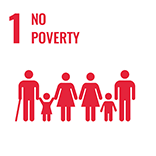
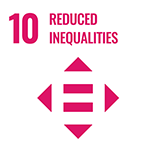
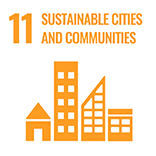
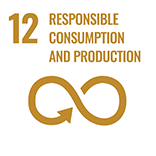

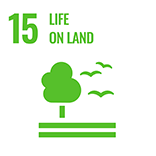
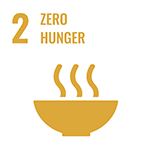




Comments
There is no content